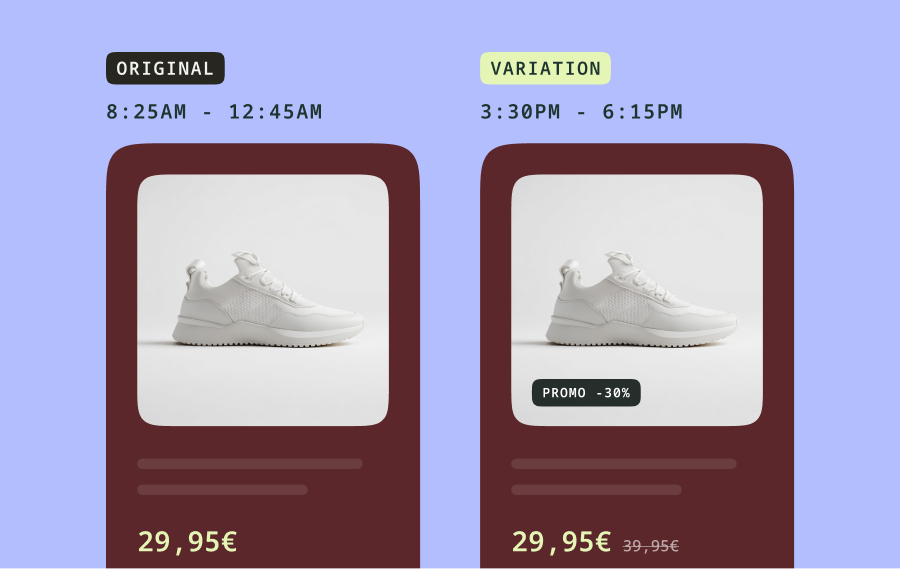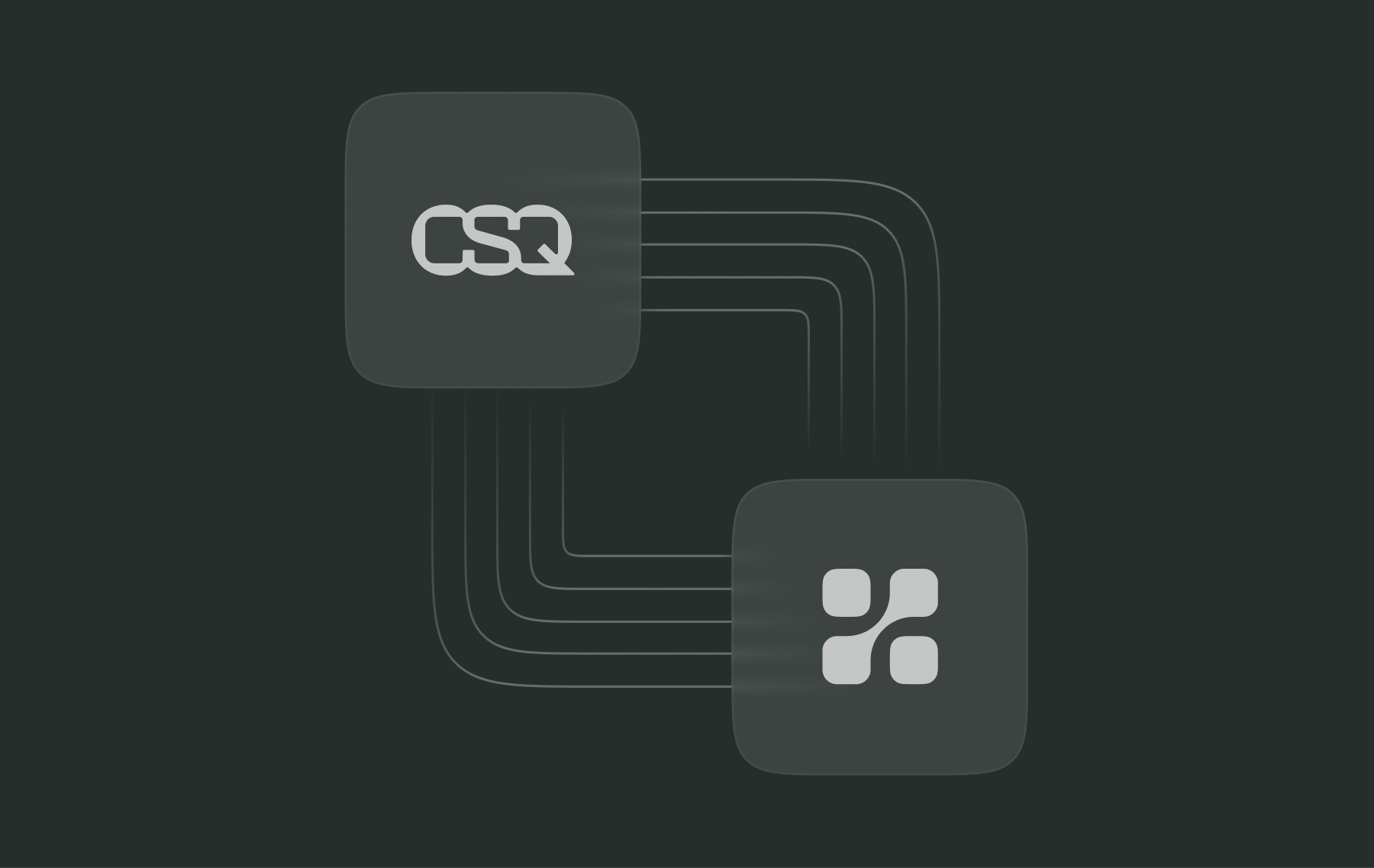Tackle conversion challenges with A/B testing & customer segmentation

In today’s competitive markets, using A/B testing to improve customer experience is a key differentiator for brands. Even loyal customers will walk away from a company after poor experiences, especially without proper customer segmentation according to research from PwC. And this has an enormous impact on the company’s bottom line.
At the same time the balance between consumers and brands is changing. Customer expectations are continually rising - and the time they spend on websites is falling. They want a tailored experience that immediately engages them or they will simply go elsewhere. With greater competition just a click away that means brands risk losing potential customers without having the chance to engage with them or understand their needs.
1. Maximizing ROI by improving the experience
How can brands be sure they are delivering what consumers want and that they are maximizing their chances of converting their website visitors? The answer is to continually improve the experience they are providing and ensure that it meets customer needs. That means testing and adapting - both of every element of their site and the wider customer journey. Failing to evolve and improve in line with customer expectations will quickly hurt conversion rates and revenues.
The best approach is to split your efforts into three, interconnected activities:
- A/B testing and experimentation to improve the overall user experience (UX) for all your audience
- Rely on segmentation and manual personalization to tailor the experience to meet the needs of specific groups
- Adopt AI-based predictive personalization to understand and meet the needs of individuals with a completely tailored 1-to-1 experience
As I’ll outline in this blog, each of these activities is essential, as they build upon each other. Brands therefore need a cohesive strategy and a technology solution that will support this all-in-one approach if they are to deliver the right experience for their customers and drive greater revenues for the business.
2. Improve UX for all with experimentation
In the analog world changing things takes time and a large amount of resources. By contrast, in the digital world everything can be changed/adapted, from the images and messages on your website frontpage to the steps in the customer journey - all the way down to the color and positioning of buttons at checkout.
Given this almost infinite amount of choice how can you be sure you are delivering the overall UX that your consumers want - and how can you ensure you are continually improving it to beat the competition?
The answer is to embrace a culture of experimentation through continual A/B testing.
Continually testing and learning
By testing your hypotheses you gain actionable data that you can use to drive better informed decision-making, rather than relying on hunches. The benefits are immediate and long-lasting - research from Go Group Digital found that organizations that create a healthy digital experimentation culture grow at least eight times faster than global GDP.
Experimentation means taking a strategic approach to what you test, continually looking to improve in all areas, never resting on your laurels and embracing failure as an opportunity to learn.
The bottom-line benefits of improving your overall user experience are potentially enormous. For example, leading French supermarket Auchan increased conversion rates by 60% by testing the different product recommendations it was providing to website visitors.
Successful A/B testing means that:
- Conversion rates and overall engagement both rise as visitors respond positively to an improved experience, helping build loyalty and long-term relationships.
- You gain a deeper understanding of customers by analyzing how they respond to UX changes. This can drive further improvements and enable the launch of new services and products, opening up additional revenue streams.
- The risk of changes not delivering benefits are reduced as decisions are based on data, not guesswork.
- You can optimize your time and budget by testing and changing the things that matter to your customers.
3. Focusing the experience with segmentation and personalization
Most major brands cater for a wide range of customers. Different groups within your customer base clearly have specific needs and demands, driven by criteria such as:
- Demographics (their age and sex)
- Behavior (what they do on your site, how they engage with your brand)
- Geography (their location and climate/weather)
- Psychographic criteria (their interests, personalities, values, beliefs and opinions)
By segmenting customers using these criteria you can provide a tailored experience to each of these groups.
In essence, to implement a good customer segmentation strategy, you need to follow a four stage process, beginning with gathering and analyzing visitor data. You can then manually segment visitors based on these different criteria, and use this information to deliver a personalized experience for that segment. When a new visitor arrives on your site that matches specific criteria, it will automatically trigger the most relevant experience for them. For example, at a basic level a female visitor to a fashion site would be shown women’s clothes, rather than seeing a generic homepage that included male and children’s garments.
Successful segmentation leads to:
- Higher conversions as visitors receive a personalized experience, tailored to the needs of their segment;
- Increased engagement through content and offers that meet the exact requirements of specific visitors, improving retention;
- Reduced churn as potential buyers that are about to leave can be identified and receive targeted messages and offers to increase their potential for conversion;
- The ability to nurture qualified leads by using the information gained online to trigger follow-up actions such as emails or offline marketing activities;
- Guaranteed ROI for your marketing and commercial actions by targeting the right incentives at the right people, reducing waste and maximizing efficiency;
4. Predictive AI personalization
As we’ve outlined traditional segmentation works on manually created criteria, such as demographics or geography. However, this is based on ‘cold’, historical information, and may not be able to detect the real-time intentions of visitors.
How can brands achieve this? It all comes down to data and being able to analyze and act upon it in real-time. The positive news is that this data is available, particularly in the form of ‘hot’ behavioral data collected anonymously on a company website and that two-thirds of customers will share personal information with brands. However, they expect it to be used wisely, protected and to provide them with some kind of value in return.
Artificial intelligence and machine learning technology enable brands to use this information to go beyond manual segmentation and deliver predictive personalization. This analyzes user behavior and characteristics in real-time, identifying signals at a micro level and establishing correlations between visitors. This approach gives AI algorithms the ability to learn what behavior leads to conversion and the power to analyze new visitors in real-time to establish their individual intent.
Kameleoon’s platform does this through the Kameleoon Conversion Score (KCS™), a real-time heat score for each of your visitors. It shows a breakdown of all your visitors according to their purchase intention in the form of KCS™ heat ranges. Depending on the heat score of each of your visitors, you can trigger in real-time, the right experience, messages and offers to drive conversion.
The result is happier consumers as they receive the personalized experience they want, thus making them more engaged and likely to convert, all leading to greater revenues and lower costs.
5. Delivering an improved experience for all through a single platform
At a time of increasing digital competition and rising expectations successful brands must be constantly looking to improve the customer and user experience on all three of these levels.
Achieving this effectively means building an experimentation led culture, backed by the right technology. You need a single platform that can seamlessly deliver A/B testing and experimentation, segmentation and predictive AI personalization, increasing engagement and conversions, optimizing resources and contributing to bottom line success. That means it is essential to work with a technology partner that has an all-in-one approach and can provide both the tools and experience to deliver the personalized experience that visitors want, leading to greater revenues across your business.




